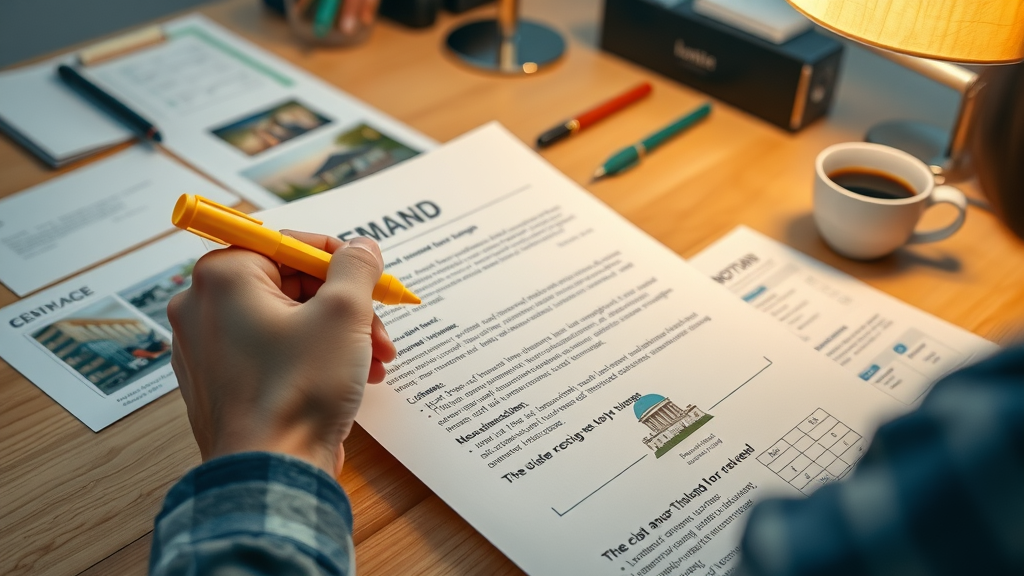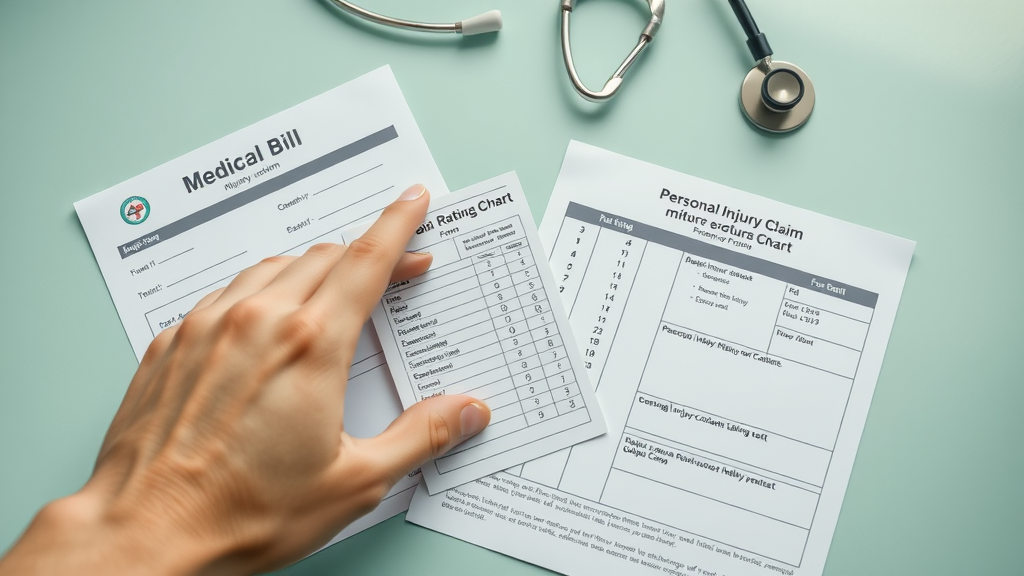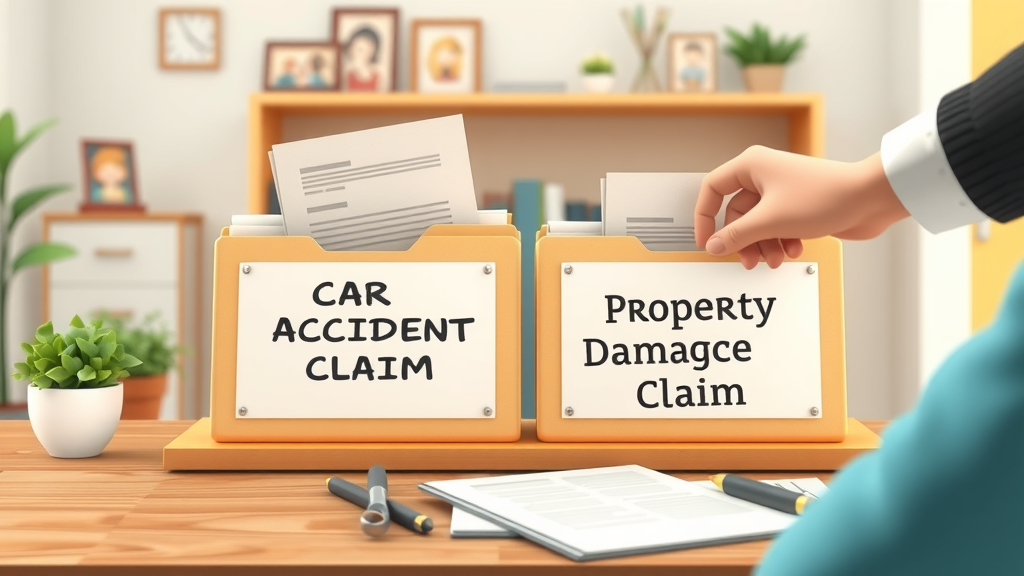Did you know that less than 30% of injury claimants negotiate their insurance settlement? This surprising statistic could mean the difference between settling for less and securing the compensation you truly deserve. Whether you’re facing the aftermath of a car accident or dealing with property damage, understanding how to approach settlement negotiation is a game-changer. In today’s world, insurance companies expect claimants to push back — so don’t leave money on the table. Dive into these expert insurance settlement negotiation tips and turn the odds in your favor.

Unlocking Success with Insurance Settlement Negotiation Tips: Surprising Stats on Car Accident Claims
- Did you know that less than 30% of injury claimants negotiate their insurance settlement? Discover why negotiation is your best tool when dealing with insurance companies after a car accident or property damage.
For millions of people every year, a car accident or a sudden case of property damage triggers the need for an insurance claim. Amazingly, most people accept the initial offer from the insurance company without question—often leaving thousands of dollars behind. Insurance companies bank on your lack of preparation and confidence. Yet, with the right insurance settlement negotiation tips , you can transform a standard claims process into a real opportunity to obtain a fair settlement . If you’ve ever wondered whether it pays to push back or negotiate, the answer is a definite yes. Insurance companies expect to negotiate, and the majority of successful claimants walk away with more—sometimes substantially more—than first proposed. Understanding how to leverage these negotiations puts the power back in your hands.
Whether your claim is related to a car accident, personal injury, or property damage, being equipped with these negotiation strategies makes a tangible difference. This article breaks down proven steps for maximizing your settlement amount , preparing bulletproof documentation, responding to lowball offers , and knowing precisely when to bring in a public adjuster or consult a specialist. Don’t settle for less—unlock the secrets to successful negotiation below.
Roadmap to Winning: What You’ll Learn About Insurance Settlement Negotiation Tips
- Key strategies for effective insurance settlement negotiation
- Essential steps to prepare for talks with insurance companies
- How to respond to a lowball offer and maximize your settlement amount
- Critical documentation to support your insurance claim and property damage
- The role of insurance adjusters and public adjusters
- Answers to frequently asked questions including fair compensation and pain and suffering
Understanding Insurance Settlement Negotiation Tips: The Foundation of a Fair Settlement
The Basics: What is an Insurance Settlement and Why Negotiation Matters in Car Accidents and Property Damage?
An insurance settlement is the outcome of your negotiation with the insurance company after a car accident , personal injury, or property damage incident. It represents the sum the insurer agrees to pay for your claim. Importantly, the initial settlement offer is rarely their best. In many cases, it’s just a starting point. This is why understanding and applying insurance settlement negotiation tips are essential—so you’re not left with a lower payout than you rightfully deserve. Negotiation gives you the leverage to ensure all your losses (including pain and suffering, medical expenses, property damage repairs, and even income lost from missed work) are fully considered and compensated.
Negotiating your settlement applies to both car insurance and property damage claims. Insurance companies are profit-driven; their goal is to resolve claims for as little as possible. By presenting compelling documentation and strategically countering their offers, you shift the negotiation process in your favor. The bottom line: Robust negotiation skills, paired with complete records, can dramatically change your claim’s outcome, allowing you to recover without financial strain.

How Insurance Companies Evaluate Your Injury Claim and Insurance Claim
Once your insurance claim is filed—whether it’s an injury claim from a car accident or a damage claim for property—the insurance adjuster initiates a formal evaluation. Companies meticulously review your policy’s terms, the extent of documented injuries, verified property losses, and sometimes even your prior claim history. Insurance adjusters compare all documentation and bills against your policy limits and relevant state laws. They use proprietary formulas to estimate damages for medical costs, vehicle repair, and lost earnings, but these calculations may underestimate your non-economic losses like pain and suffering.
It’s not uncommon for insurance companies to challenge the nature and extent of your injuries or damage—sometimes questioning the necessity of certain medical treatments or repairs. This is where persistent documentation and a strategic response are crucial. Understanding how claims adjusters operate allows you to anticipate objections and prepare counterarguments. The more evidence you present, the less room the adjuster has to undervalue your claim, substantially strengthening your negotiating position in settlement discussions.
Key Steps Before Insurance Settlement Negotiation: Strengthening Your Position
Documenting Damage Claims: From Car Accident Scenes to Property Damage Assessments
Your claim’s strength starts with thorough documentation . For a car accident , this means taking clear photos of the involved vehicles, the scene, and any visible injuries as soon as possible after the incident. Capture multiple angles, document skid marks, debris, weather conditions, and relevant traffic signs. For property damage claims, take high-resolution photos or videos of every affected area or item before beginning repairs or moving anything. Label damage and keep all related receipts. This visual evidence provides undeniable proof that supports your narrative and challenges any attempt by the insurance company to minimize your losses.
For both injury and property damage claims , prompt, detailed documentation prevents disputes about when and how the loss occurred. Use a checklist during your assessment, and keep all paperwork—such as police reports, estimates, and repair bills—together in a claims folder. Even seemingly minor details can tip the negotiation process in your favor. Remember: Strong documentation is often the difference between a disappointing and a fair settlement.

Calculating Your Losses: Factoring in Pain and Suffering, Medical Expenses, and Fair Compensation
Insurers rely on numbers—so do you. Start by adding up all relevant medical expenses : hospital visits, follow-up care, medications, physical therapy, and any specialized treatment tied to your injury claim . Next, account for property repair or replacement costs. Don’t forget indirect losses like lost wages if the accident prevented you from working. Then, consider “non-economic damages,” especially pain and suffering . Although these are subjective, tools like the “multiplier method” or “per diem method” help estimate a fair monetary value. Present your calculations in writing, backed by receipts, pay stubs, and a detailed description of how the injuries or damage affected your quality of life.
This meticulous approach puts you in control of the conversation. The insurance adjusters will scrutinize every line, so leave no room for guesswork. If you’re unsure how to value a specific loss, consult with a specialist or a personal injury lawyer—this is particularly true when the injuries are severe or permanent. Highlighting the full scope of your financial and emotional hardship sets the stage for a successful settlement negotiation.
Obtaining and Organizing Essential Records for a Successful Insurance Settlement
The backbone of any insurance claim —whether for personal injury or property damage—is clear, organized documentation. Compile all medical reports, repair estimates, receipts for expenses, photographs of damage or injuries, and witness statements. Create a digital and physical file system, organizing records by date and type of loss. Secure copies of police reports, insurance policy documents, and any correspondence with the insurance company or adjusters. Proper recordkeeping not only streamlines negotiations but also signals to the insurer that you’re thorough, serious, and not easily swayed by a lowball offer .
Additionally, track every communication with the insurance claims adjuster—note the date, time, and details of every phone call or email. This level of preparation shows the insurer you are informed and determined to secure a fair settlement . If necessary, a well-documented file can become powerful evidence in your favor should the claim progress to mediation or litigation.
Initial Contact with Insurance Companies: Setting the Right Tone in Settlement Negotiation
Communicating with Insurance Adjusters and Recognizing Their Tactics
When you first contact the insurance company , your approach sets the tone for the entire settlement negotiation . Be polite but assertive, and stick to the facts. Avoid emotional statements or spontaneous speculation about the accident or injuries. Remember, the insurance adjuster’s job is often to protect the company's bottom line by searching for ways to minimize your payout—so be mindful of what you say. Familiarize yourself with common tactics such as asking loaded questions, downplaying your losses, or implying urgency to accept an early low offer . Recognizing these strategies empowers you to respond thoughtfully and safeguard your claim’s value.
Always ask for the adjuster's name, contact information, and a summary of what’s discussed in follow-ups. Document each conversation in your file. As the negotiation progresses, continue referencing your evidence and never agree to anything over the phone unless you have it in writing. By establishing transparency and holding the adjuster accountable, you maintain control throughout the negotiation process.

What Not to Say to an Insurance Claim Adjuster? (PAA)
- Avoid admitting fault, minimizing your injuries, or accepting the first settlement offer. Only discuss facts and don’t speculate about accidents or injuries.
Steer clear of statements that could jeopardize your insurance settlement negotiation. Telling an insurance adjuster things like “I might have been distracted” or “I don’t feel that hurt right now” can be used to diminish your claim’s value. Stay strictly factual and direct all questions about injuries or damage back to your documentation. Refrain from giving a recorded or signed statement until you have had adequate time to prepare or consult a personal injury lawyer. Remember, every conversation is part of the negotiation process, so maintain a measured, professional demeanor at all times.
The Demand Letter: Crafting a Persuasive Argument in Insurance Settlement Negotiation Tips
Key Elements of an Effective Demand Letter for Insurance Claims
Your demand letter serves as your formal case for fair compensation and sets the stage for meaningful settlement negotiation. It should include a clear summary of the incident, an itemized list of monetary damages, supporting documentation (such as medical bills, proof of property damage , and repair estimates), and a compelling explanation for your requested settlement amount. Use persuasive but professional language, cite the specific impacts on your life—from physical pain to missed work deadlines—and detail how each loss connects to the accident.
An effective demand letter also anticipates pushback from the insurance adjuster. Address any possible weaknesses in your case and fortify them with facts. End with a reasonable, specific demand amount and a deadline for the insurer’s response. A well-crafted demand letter makes your case hard to undermine and often triggers a more substantial counter-offer, accelerating the negotiation process.

Responding to the Settlement Offer: Negotiation and Counter Offers
Evaluating a Settlement Offer: Is It Reasonable? (PAA)
- A reasonable settlement offer should cover all documented losses, including pain and suffering. Review it against your demand letter and supporting evidence.
When you receive a settlement offer from the insurance company , take time to review its details—don’t rush. The first offer, especially after a car accident or personal injury claim , is often deliberately low. Compare the proposal to your documented losses and the amount outlined in your demand letter. Does it fully compensate for medical expenses, lost wages, property repairs, and pain and suffering? If the answer is no, you have every right to negotiate further.
Look for missing or undervalued items in their offer. Use your organized file to decisively counter any gaps. Detailed records and persistence are your best tools. If the insurance company’s response seems unwilling to budge, consider enlisting a public adjuster or consulting a personal injury lawyer to review your situation for additional leverage or legal recourse.
How Do You Ask for More Money in a Settlement? (PAA)
- Politely counter with detailed evidence supporting higher damages—medical bills, lost wages, and proof of pain and suffering.
Negotiating for a higher settlement amount requires professionalism and solid proof. Start by thanking the insurer for their consideration, then methodically outline why the offer is inadequate—reference specific supporting documents, additional medical treatment, or estimates that justify your position. Counter with a new figure, rooted in your evidence, and remain open to further negotiation. Express your willingness to settle fairly, but don’t back down from your documented losses.
Persistence pays off. Most insurance companies expect at least one round of counteroffers during the negotiation process. If you provide credible, comprehensive documentation, your case for increased compensation becomes far more compelling, often resulting in a better outcome.
Strategically Handling a Lowball Offer and Pushing for Fair Compensation
Lowball offers are a common insurance tactic, aimed at quickly resolving claims for far less than their true worth. When confronted with a low offer, remain calm and don’t take it personally. Instead, restate your documented losses, provide additional clarification if necessary, and politely reject the offer without alienating the adjuster. Indicate you are prepared for further discussions or even legal review if a fair settlement isn’t reached.
Document all responses and maintain a confident, factual demeanor. Avoid showing impatience or frustration, as these can weaken your negotiation stance. The more consistently you present your case, the more likely the insurer will reconsider and improve their offer to reach a satisfactory settlement amount.
Working with Insurance Adjusters and Public Adjusters During Settlement Negotiation
Insurance Adjusters vs. Public Adjusters: Roles in Insurance Settlement Negotiation
During the insurance settlement negotiation process, understanding the difference between an insurance adjuster and a public adjuster is crucial. Insurance adjusters work for the insurance company ; their primary responsibility is to protect the company’s interests and manage payouts efficiently. Their incentive is often to minimize the claim’s settlement amount. In contrast, public adjusters are hired independently by claimants to evaluate and advocate for your best possible settlement.
A public adjuster brings expertise in assessing the full scope of losses and negotiating directly with insurers on your behalf—especially valuable when claims become complex or the insurance company disputes your documentation. Consider engaging a public adjuster if you feel overwhelmed or if the insurer remains unresponsive to your evidence.

How to Get More Money from Your Insurance Settlement? (PAA)
- Provide comprehensive evidence, know your claim’s value, refuse early low offers, and be persistent in your insurance settlement negotiation.
To maximize your settlement amount, present thorough documentation for all losses, remain professional in all communications, and never accept the initial offer. Understand and outline the full monetary effect of your injuries or property damage, and be proactive in contesting undervalued elements in any counter proposal. Persistence and strategic negotiation increase the odds of the insurance company agreeing to a more equitable payout. Don’t hesitate to consult a public adjuster or legal specialist if you feel you’re being stonewalled.
Special Situations: Insurance Settlement Negotiation Tips for Personal Injury and Property Damage Claims
Key Calculations for Pain and Suffering in Personal Injury Claims
“Pain and suffering” can make up a sizable portion of your personal injury claim . Calculating these damages begins with an honest assessment of physical pain, emotional distress, changes to your daily life, and ongoing medical treatment requirements. Insurers commonly use the “multiplier method,” multiplying your total economic damages by a number (typically between 1.5 and 5) based on the severity of your injuries. Alternatively, the “per diem” method assigns a daily value for each day you experienced hardship.
When negotiating pain and suffering, back your calculations with medical records, prescriptions, photos showing the impact of injuries, and written accounts of lost opportunities or critical life events missed due to the accident. If needed, ask your doctor or therapist to detail the effects of your injuries in their reports. This comprehensive presentation makes your claim for pain and suffering more persuasive during settlement negotiations.

Navigating Multiple Damage Claims: Car Accident and Property Damage Considerations
If your situation involves both a car accident and subsequent property damage —such as a vehicle collision that also causes destruction to personal belongings—managing multiple damage claims requires meticulous organization. Submit each claim separately but cross-reference supporting documents and reports to ensure consistency. Separate files enable easier tracking and help you avoid accidentally omitting crucial evidence needed to support your settlement negotiation for both types of claims.
Different aspects of your incident (vehicle, personal property, bodily injury) may fall under separate policies or policy sections. Clarify these details with your insurance company before proceeding, and use side-by-side comparisons to spot any gaps in coverage or compensation. The more organized your claims process, the more successful your settlement negotiation will be—often resulting in a higher aggregate payout.

Insurance Settlement Negotiation Tips: Essential Dos and Don’ts
- Always remain factual and professional in all claims communications
- Never accept a first settlement offer without careful review
- Gather and organize comprehensive documentation for all injury and property damage claims
- Enlist a public adjuster if claims grow complex
- Demand fair compensation and outline clear justifications when negotiating
- Do not give statements about injuries before documentation is complete
- Avoid emotional discussions—stay fact-based
Tables: Comparing Insurance Company Tactics and Settlement Outcomes
| Insurance Company Tactic | Potential Impact on Settlement | Negotiation Counter Strategy |
|---|---|---|
| Early lowball offer | Pressure to settle quickly | Present complete evidence, counteroffer |
| Delaying claim process | Frustration, loss of momentum | Document every interaction, escalate |
| Challenging injury authenticity | Deny or reduce payout | Provide medical reports, witness |
| Suggesting you don't need a lawyer | Deter professional support | Consult with a specialist if needed |
Quotes that Inspire Smart Insurance Settlement Negotiation
“Never accept the first offer. Insurance companies expect you to negotiate—so advocate for what you deserve.” – Legal Affairs Expert
“Persistence is key in settlement negotiation. Every documented fact supports your claim.” – Insurance Adjuster
Watch our short educational explainer on the top strategies for negotiating your car accident insurance settlement—including documentation, claim communication, and counter-offers. Animated graphics and expert voiceover make these critical settlement negotiation tips easy to follow.
Discover the secrets to presenting a powerful, well-documented demand letter—an essential step for a successful insurance settlement negotiation.
Frequently Asked Questions About Insurance Settlement Negotiation Tips
-
What is the best way to start a settlement negotiation?
Begin by gathering robust documentation of all injury, damage, and related expenses. Submit a detailed demand letter and be ready to reference specific evidence throughout negotiations. Approach the discussion professionally and remain firm about your needs. -
When should I hire a public adjuster for my insurance settlement?
Hire a public adjuster if your claim is particularly complex, if the insurance company disputes your documentation, or if negotiations stall despite your best efforts. They can often secure higher settlements through professional advocacy. -
How do I calculate pain and suffering?
Use methods like the multiplier or per diem approach, supported by medical records, testimony, and documentation illustrating your daily life impact. Precise records and clear examples make your request more credible. -
What if I’m not happy with the insurance company’s offer?
Politely reject the initial offer, restate your position with supporting documentation, and submit a counter offer. Consider escalating to a public adjuster or injury lawyer if needed for fair compensation. -
Do I need a lawyer to negotiate a car insurance settlement?
No, but consulting one can be very beneficial, especially for complex, high-value, or disputed claims. An injury lawyer offers expertise that helps maximize your settlement amount and ensures fair treatment.
Final Thoughts on Insurance Settlement Negotiation Tips for Fair Settlements
- Mastering insurance settlement negotiation tips means approaching each claim with preparation, patience, and persistence. Remember—negotiation is expected and can dramatically increase your payout for car accident and property damage insurance claims.
Ready to Take Action? Learn More About Insurance Settlement Negotiation Tips
- For more guidance on maximizing your insurance settlement negotiation and securing fair compensation, visit pugetsoundinjurylaw.com/
To enhance your understanding of effective insurance settlement negotiation strategies, consider exploring the following resources:
- “Tips for Negotiating with Insurance Adjusters for a Fair Settlement” ( fletcherlawusa.com )
This article provides practical advice on setting a minimum acceptable offer, maintaining composure during negotiations, and understanding the importance of patience to avoid settling for less than you deserve.
- “8 Insider Tips for Negotiating a Fair Settlement with Insurance Companies” ( ceolawyer.com )
This resource offers insights into the importance of patience and persistence, handling delays and pushbacks, and knowing when to consider legal action to secure a fair settlement.
By reviewing these articles, you’ll gain valuable perspectives and strategies to effectively negotiate your insurance settlement and ensure you receive the compensation you rightfully deserve.
 Add Row
Add Row  Add
Add 




Write A Comment